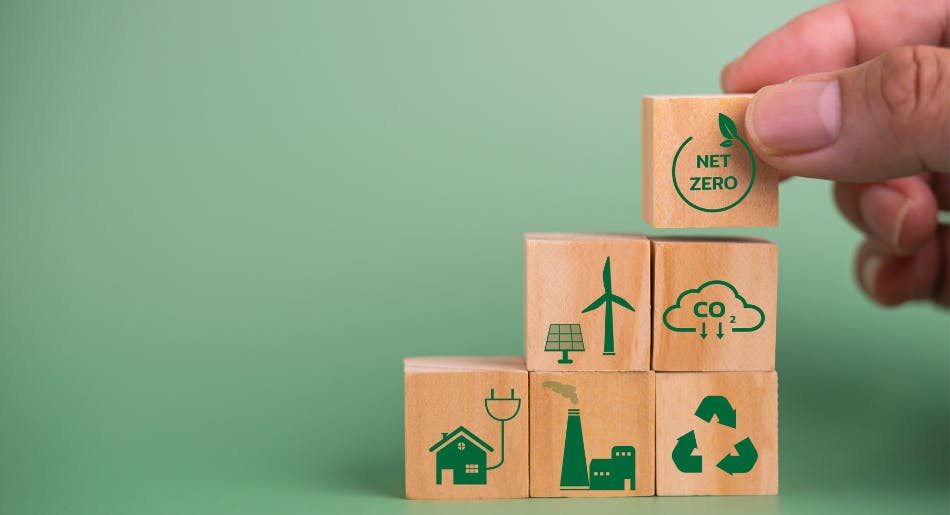

“Should Scope 3 be calculated” and other questions
A few questions arise often in the debate on carbon footprint and carbon neutrality. This is quite understandable, as many companies are still in the early stage of calculating their emissions. We listed the answers to the five most frequently asked questions.
"Are there common standards for calculating carbon footprints?”
It is often said that there are no well-established standards for carbon footprint calculation. However, this is not the case. In fact, there are several standards for carbon footprint calculation, but don't be fooled by the number: they all aim at the same goal but are used for different purposes. For example, the carbon footprint of a company and an individual product are based on different standards. Perhaps the most widely used and best-known standards are the Greenhouse Gas Protocol (GHG Protocol) standards. They are a set of standards collected together. Under these standards you will find calculation standards for almost everything, including calculating emissions of cities, companies, and projects.
The best-known standards for organization-specific emission accounting are the GHG Protocol standards and the ISO 14064 standards. In contrast, product-specific carbon footprint calculations follow standards such as ISO 14067 and PAS 2050. Knowing and applying these standards requires expertise which is at the core of OpenCO2.net's competence.
“Do Scope 3 emissions (value chain and procurement) need to be calculated?”
Earlier, carbon footprint calculation has often included only business travel and waste of Scope 3 emissions, but nowadays this is no longer always sufficient. Scope 3 emissions should include all material emission sources for which reliable input data can be obtained with reasonable effort. If emissions are excluded from the calculation, there must be a well-founded reason for their exclusion, which must also be reported.
Sometimes identifying Scope 3 emission sources is very challenging. However, the forerunners and the most ambitious organizations make the effort to identify the most difficult sources. For example, the Finnish Textile and Fashion, together with OpenCO2.net, identified the emissions impacts of the global value chains of the entire Finnish textile sector.
“Can we start by offsetting our emissions?”
Many organizations are setting ambitious carbon neutrality targets, which is a good thing. Sometimes they want to get there quickly and start with offsetting first. However, what is not measured is impossible to manage. To know the climate burden of an organization or a product, the carbon footprint must first be calculated thoroughly and based on standards. To avoid greenwashing, an organization must then plan and implement its own emission reduction measures and make a plan for future emission reductions. Only after that should the remaining emissions, which cannot be reduced, be offset. The aim is that the amount of carbon offsetting should decrease year by year as the company continues to make emissions reductions according to its carbon management plan.
In our projects, we have often identified significant emission reduction opportunities that help companies on their way towards carbon neutrality. The company will benefit from its own emission reduction measures from the moment they are implemented until the future. When a company reduces its own emissions instead of offsetting, the organization's intellectual capital will increase simultaneously with business development.
“Can carbon neutrality be achieved with your own forest?”
To make sure that forests could be counted as carbon credits, there must be trustworthy evidence that the emission reductions are permanent, measurable, and real. The Finnish Government's Guide to good practices for voluntary carbon markets, published in early February 2023 , highlights the risk of double-counting when purchasing carbon credits, i.e. buying offsets. In Finland, and in many other countries that are committed to emission reduction targets, both forest planting and fertilization are counted in the national emissions inventory. This means that afforestation projects in Finland, for example, cannot be counted as carbon neutral activities by a company. However, companies may choose to participate in afforestation projects, and contribute to the national carbon neutrality target.
"How to start carbon footprint calculation?"
At its simplest, the first steps in the carbon footprint calculation are to define the purpose of the emissions calculation and to define the scope of the calculation. If you are unsure which standard should be used for the calculation, to which activities emissions should be allocated or which emission factors should be used, you can increase your knowledge with carbon footprint training or ordering the calculation project from experts. In this case, experts identify the emission sources, search for reliable factors in databases and carry out a reliable emission calculation. If there are no changes in the system boundary or emission sources included in the calculation, it is often easy to repeat the carbon footprint calculation the following year as an in-house calculation using OpenCO2.net tools and lessons learned from carbon footprint training.
OpenCO2net helps its customers avoid greenwashing by providing tools, training, and consulting services for reliable standards-based carbon footprint calculation. Our services cover both scope 1, 2 & 3 emission calculations for companies and carbon footprint calculations for products. In addition, we offer the implementation of customized carbon footprint calculators, which are a particularly cost-effective alternative to the calculation of emissions from a wide range of products.
Do you want to hear more about our services?
Contact us via the form or directly to our expert, and we can figure out together which OpenCO2net calculator would work best for your organization.
Sari Siitonen
Founder, CEO
sari(a)openco2.net
+358 40 761 5221
